Wellington Council Hopes Public Transport Growth Will Come Right
Peak public transport growth in Wellington has been static for three years, with bus patronage dropping.
That growth is now hit further by the commuter frustration with delays while the rail infrastructure is improved - so when does the capital’s regional council think it will grow again and by how much?
The council gives as reasons for the static trend in peak public transport trips as being besides reliability, falling fuel prices (not any more?) ,increases in fares and “comfort issues with old rail infrastructure and rolling stock.”
Recent trends in off-peak trips have grown faster than peak period travel, although it is uncertain whether this will continue. Maybe that’s because of drink driving blitzes making it easier to use public transport.
Annual peak period public transport trips have remained static at 17.5 million over the past three years, despite a growing population. The same numbers seem to be using public transport but switched - bus patronage is down, rail up, at least until the summer of bad train service problems. Over that time, annual peak period passenger trips have decreased by almost 600,000 from a 2005/06 high.
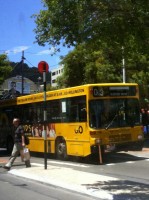 The region’s proposed policy blueprint for land transport investment over the next 30 years, updated today to take into account the Transmission Gully proposal which the council supports, predicts that public transport trips will increase 34% in a medium scenario by 2041.
The region’s proposed policy blueprint for land transport investment over the next 30 years, updated today to take into account the Transmission Gully proposal which the council supports, predicts that public transport trips will increase 34% in a medium scenario by 2041.
Peak period trips are forecast to grow 44%, while inter-peak trips only 25%. Annual off-peak passenger trips by all public transport modes have increased during 2008/09 by 4.7%, or over 811,000 trips.
Modelling done for the plan agrees that there is ample opportunity to increase public transport patronage.
It is projected that under the highest scenario, annual public transport trips will increase by 119% that result whenever population and economic growth are high, the network is improved, and pricing mechanisms are in place that increases the cost of car trips.
The lowest scenario sees a decrease of 14% in annual public transport trips as a result of low car trip costs, low population growth and a lack of investment in public transport.
How unreliable has public transport become?
The plan says service monitoring data shows that scheduled bus services operate at least 99% of the time. Those that don’t run are generally a result of operational issues. However, bus journey time delays are often caused by incidents and congestion on the road network.
This is a particular problem in the south end of Wellington City’s ‘golden mile’ and peak congestion bottlenecks around the region.
Rail network service monitoring -which must have been before the summer meltdown- shows that EMU (electric multiple unit) services run to within five minutes of the timetable about 90% of the time. Wairarapa services run to within five minutes of the timetable about 80% of the time. A major contributor to poor service reliability is the ageing rail infrastructure and rolling stock which leaves the network vulnerable to faults and breakdowns.
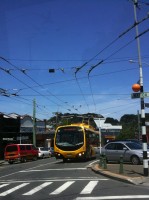 It’s interesting that the Auckland trends, reported here last week from the ARC report - more cars on the roads and people using them to travel more distances - pops up again in the Wellington report.
It’s interesting that the Auckland trends, reported here last week from the ARC report - more cars on the roads and people using them to travel more distances - pops up again in the Wellington report.
Over the ten years from 2000 to 2009, the total number of cars registered in the Wellington region rose by 16%.
Increasing car ownership may also contribute to increased car use and greater demand on the road network. Over the past 20 years, the number of trips on New Zealand’s state highways has grown 66%. The long term trend is for people to make more trips, more often, over longer distances.
Auckland’s report said traffic congestion had improved in the afternoon peak time.
Likewise, Wellington motorists will be encouraged to stick with cars because Greater Wellington’s road congestion dropped across most periods of the day during 2009. All- day average congestion decreased 15% between 2008 and 2009 (from a near record high of 25 seconds in 2008 to 21 seconds delay per kilometre travelled in 2009 – similar to 2006 levels).
Fran Wilde, Chair of the Wellington Regional Transport Committee, repeated today that help is at hand for Wellington’s rail network with more than half a billion dollars is currently being invested in the regional rail network.
But she says it’s important to start thinking even beyond that.
“Even though we are now getting close to delivering that, we also need to plan in the RLTS for further improvements, such as more peak hour services, more trains, and upgrading stations and park and ride facilities.
The proposed 30-year strategy also advocates for government policy to enable road pricing and supporting rail freight initiatives where the net benefits exceed those of road freight.

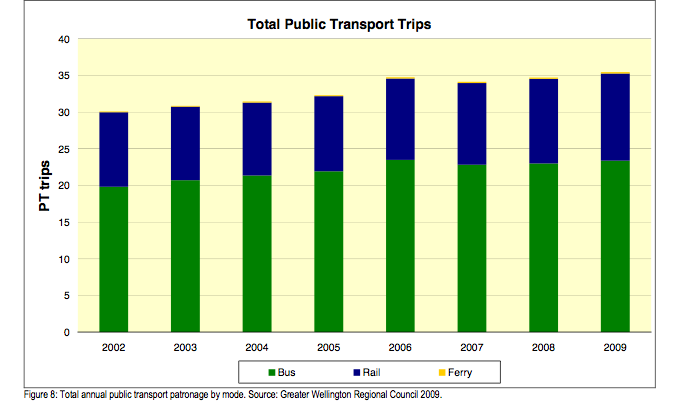
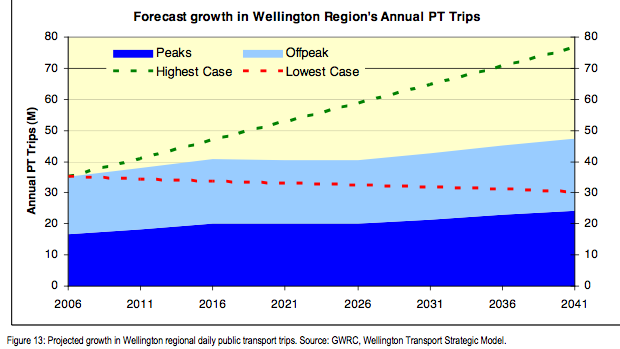
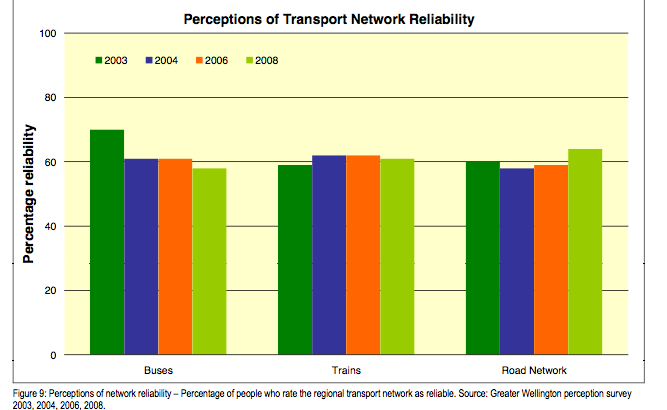










2 Comments
Seems Wellington and Auckland are in similiar boats, just Wellington’s has a head start…
Auckland strikes me a much more innovative and positive thinking than GWRC. GWRC strike me as somewhat complacent, none of the strong vision to turn things around like Auckland seems to have. I know Wgtn has a bit of a head start, but I think that soon after the CBD tunnel has opened, per capita passenger trips in Auckland will be higher. Simply because Wgtn will still largely have the same network they have now.